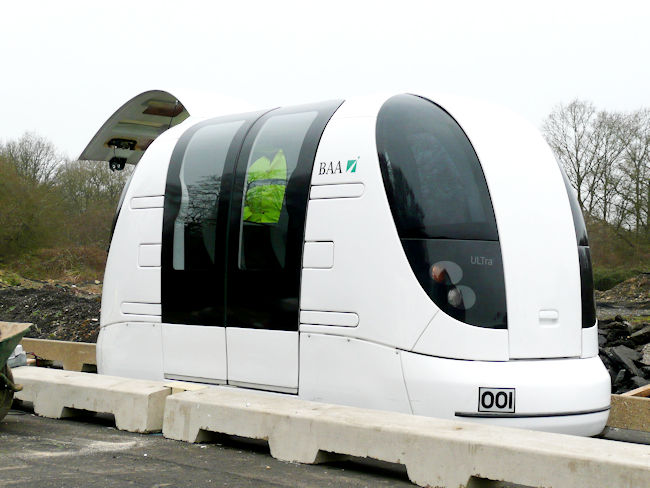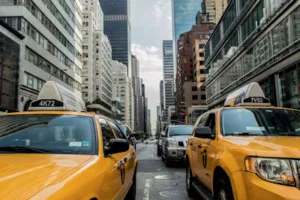During my decades of working life, I have travelled around the world many times and rented cars and hailed taxis endless number of times. Usually, for a one-day trip, I used taxis, and for multi-day trips, I rented cars. Car rental had always been a hassle as I had to stand in line to order a car at the car rental booth in the terminal, get into shuttle buses from the terminal to the car rental lot, pick up the car, and drive off with the unfamiliar controls knobs and levers with a high risk of getting into accidents.

Getting into a taxi seems to be easier, but not much. Most of the time, I had to stand in line also. I had to tell the taxi driver where I wanted to go. Most of the time, they did not understand the street names and I had to spell out the whole name to them. In recent years, they had to key them into their GPS and it took quite a bit of time.
London was quite different. The taxi drivers have developed extra memory cells in their brain for storing all the street name, locations, tourist traps, etc. and it was shown by scientist that there is a certain region in the taxi driver’s brain that is much larger than normal people. It was speculated and confirmed that the street name and locations are in there, many gigabytes of them.
When the destination was reached, I had to give them my credit card and it could take a while before it was validated and ready for signature. Sometimes, the driver would cheat and told me that the machine was not working and that they needed cash.
Uber Appears
My daughter lives in San Francisco and parking is very expensive. As a result, most of the time, she would use Uber to go from place to place instead of driving, and even Ubers to work sometimes. She told me many times that I should try Uber instead of a taxi. It is convenient and cheap, she said. I never did. This could be the human inertia inside me that kept me going in a straight line, the taxi line.
A few days ago, I had a day trip to San Jose visiting a company, which is about 10 miles from the airport. The only flight I could get landed about two hours ahead of the meeting. If I took a taxi, it would take less than 15 minutes to mak the trip. I decided to stay in the terminal until half an hour before the meeting time. After checking emails, etc., a little voice of my daughter in my head told me clearly – try Uber, it is convenient and cheap. I started to download the App, signed up and was ready to go.
I first checked the cost of a taxi for the trip and it was about $40. I then checked Uber and the cost was about $20. It confirmed “cheap”. I decided to “try” right there and right then. It was still early and I waited a bit before I ubered for a car. I used GPS to locate myself as the starting point, copied the address from the customer’s email and pasted it into the destination box. I pushed “SET PICKUP LOCATION” and picked the location for Terminal B. The price was displayed and I entered “Request UberX”.
I authorized payment through my Apple Pay account using my fingerprint. How convenient! The map showed up on my phone with Uber cars running around. After a little while, a flag with 5-minutes showed up together with the driver name and picture, the picture of the car and the license plate number. Underneath it was a button to call the driver, if needed.
My Uber Arrives
I waited and watched MY Uber car moving slowly towards me on the map. Finally it arrived with the license number clearly showing at the lower right corner of the windshield. I flagged him down, introduced myself, and got into the car. When I arrived at the destination, I said “thank you” to the driver, got out of the Uber car, and THAT WAS IT!! This confirmed “convenient”.
After the meeting, I decided to uber myself back to the airport and the experience was also convenient and cheap. I saved about $40 that day on transportation, which is sufficient for a good piece of steak or a good Dim Sum luncheon.
After I got home that day, I could not stop thinking about the whole ubering experience. I would not get into another taxi in my future trips if I have a choice and ubering seems set to replace taxis in future, at least for me. There goes the Yellow Cab Company and all the independent cab owners. Looking back, in the US, we saw the disappearance of very large, decades old department stores that became obsolete like Broadway, Montgomery Wards, May Company, Bullocks, etc., and the only ones left are JC Penny and Sears, and these seem to be on their way out due to changes in technologies and consumer behavior.
Uber Drivers?
I then thought further. The most extraordinary thing was that I never talked to the driver, or, at least, I did not have a need to do so. As a matter of fact, the driver told me that he Ubered many foreign visitors that did not speak any English, without any problem. He got all the instruction from and got paid by Uber headquarter. The visitor got in and got out without the need to say a single word.
I can see clearly that the “driverless Pods”, which can be very large Pods, will become the taxis of the future replacing the non-driverless Uber cars. I started to think about what would the passengers do inside the Pod during the trip?
I went to look at some webpages describing the present and future of LeEco’s LeSee driverless car. LeEco is a Chinese car company competing with the US company, Tesla (and, of course, also now owns Vizio – Man. Ed.). LeSee is fully electric and can be fully driverless, but company said. There is a side article on the website that describes what people can do inside the driverless Pod while traveling to pass the time. This is, of course, only limited by your imagination! The mile-high club members could finally join the lower cost driverless Pod club instead.
 LeSee’s Pro has a conventional interior layout at the moment. Image:LeEco
LeSee’s Pro has a conventional interior layout at the moment. Image:LeEco
Displays Will not be Small
One thing I am quite sure is that they are not going to watch the little LCD displays on their notebooks or tablets or the screen behind the passenger seat headrest as this will disappear, as it is unlikely that people will want seats behind another passenger. Most likely, contents could be displayed onto a large screen, which could also double duty as the “window on demand”.
Passengers are not confined in a small space as in a taxi or Uber car. There could be a desk, a larger display for watching videos or movies, etc. The windows can function as display screens with a “touch” of an icon. LeEco also has its own Internet platform and its own cloud, the LeCloud, which is one of the world’s largest video cloud networks. The passenger could choose to watch a short video, a movie, or anything they choose in LeCloud.
 A pod at Heathrow Image:Skybum
A pod at Heathrow Image:Skybum
At the end of the trip, the passenger could opt to finish watching the video or movie while the Pod could be parked legally at pre-authorized locations and the passenger would pay extra for extra time. The Pod becomes a personal space for the passenger and the displays will be the connection to the outside world. The trip between the airport and the company you are visiting will no longer be full of noise, traffic, etc. Instead, it could be a flight above Hawaii, a short cruise in the Mediterranean, or a trip to Mars. Of course, all these can be shown with 3D, 4D with intentional motion, or even 5D with rain or shine added. The possibilities are infinite.
I would predict that a real revolution for such driverless Pods is the day when ordinary people prefers to use driverless Pods instead of owning a personal vehicle for commuting to work, running errands, shopping, etc. This will happen when there are sufficient numbers of Pods running around and with sufficient users riding them. Technically, this is already feasible already. The major obstacle is cost. There is a need for a fare scale that charges differently between long distance trips and short distance trips as some kind of volume discounts. When one sums up the total cost of running a vehicle versus Ubering, the decision could be very simple and I do think many people would choose Ubering.
If you have not Uber before, try Ubering on your next trip. I am sure that you would like it. Enjoy. – Kenneth Li
Ken can be contacted at [email protected]

